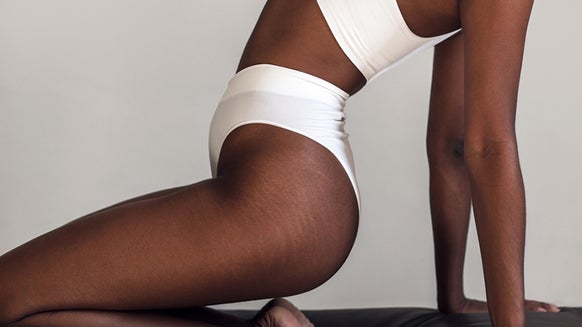What Stretch Mark Treatment Is Best for You?
As one of the most common complaints among women, fighting stretch marks can feel like an uphill battle. Whether from pregnancy, weight gain or loss genetics, there seem to be as many causes of stretch marks as there are purported solutions. Fortunately, there are various treatments that can help minimize the appearance of stretch marks over time.
Hyaluronic Acid
Stretch marks will slowly lose their color over time, but you can help expedite this process. Hyaluronic acid applied as soon as you notice stretch marks forming might reduce their appearance. Because hyaluronic acid is also hydrating and plumping, it can temporarily make older stretch marks less noticeable.
Tretinoin
Research has shown that topically applied tretinoin can reduce the appearance of stretch marks by up to 20 percent. This may seem a low number, but compared to other treatments, it's a promising option. Tretinoin works best on recent stretch marks that are less than a few months old and still pink or red in color rather than older marks. As a synthetic form of vitamin A, tretinoin works to rebuild collagen—making the stretch mark look more like your normal skin.
Acid Peels
While facial peels are all the rage, they can also be beneficial for the body. Trichloroacetic Acid (TCA) chemical peels are available over the counter or you can have more intense treatments performed by a physician. While consumer peels usually contain a five percent concentration, professional peels can go up to 70 percent. In order to see results, you'll need to undergo a series of TCA peels. TCA penetrates more deeply than AHAs or BHAs and therefore provides more noticeable results for stretch marks.
Glycolic Acid
Glycolic acids are already popular for their regeneration and exfoliation properties, but these AHAs (alpha hydroxy acids) can also be an important addition to your stretch mark arsenal. Best for sensitive skin, this ingredient works by slowly and gently exfoliating the skin to even its texture. It's also been shown to accelerate collagen production by activating fibroblasts—the cell that creates collagen. This potent ingredient helps to reduce the width of striae alba (white stretch marks) over a six-month period. You can also combine glycolic acid with tretinoin for even better results. Studies have shown that using a 20 percent glycolic acid combined with 0.05 percent tretinoin emollient cream can help increase elastin content and increase epidermal thickness. For those with darker skin tones, glycolic acid is your best bet for stretch-mark modification, since repetitive laser treatments can cause pigment alteration.
Laser Therapy
For especially stubborn red and purple stretch marks, vascular lasers can help target swollen and inflamed blood vessels and stimulate cell and collagen production. Just like with any topical treatment, it's not a one-shot deal, and multiple sessions are necessary.
Micro-needling and Dermarollers
One popular skin treatment is micro-needling or "dermarollers." These roller systems act almost like acupuncture and are covered in medical-grade, stainless steel needles that painlessly penetrate skin to stimulate collagen and elasticity production. As it creates tiny punctures in your skin, it signals the skin cells to produce more collagen to repair these punctures.
This article has been reviewed by board-certified dermatologist Dr. Emmy Graber.

From the latest hair and makeup trends to the best solutions for your skin issues, we've got all your beauty concerns covered!
Related Posts

What Causes Stretch Marks? A Dermatologist Answers This FAQ and More

Refine Those Lines: 6 Best Products That Will Improve the Appearance of Stretch Marks










